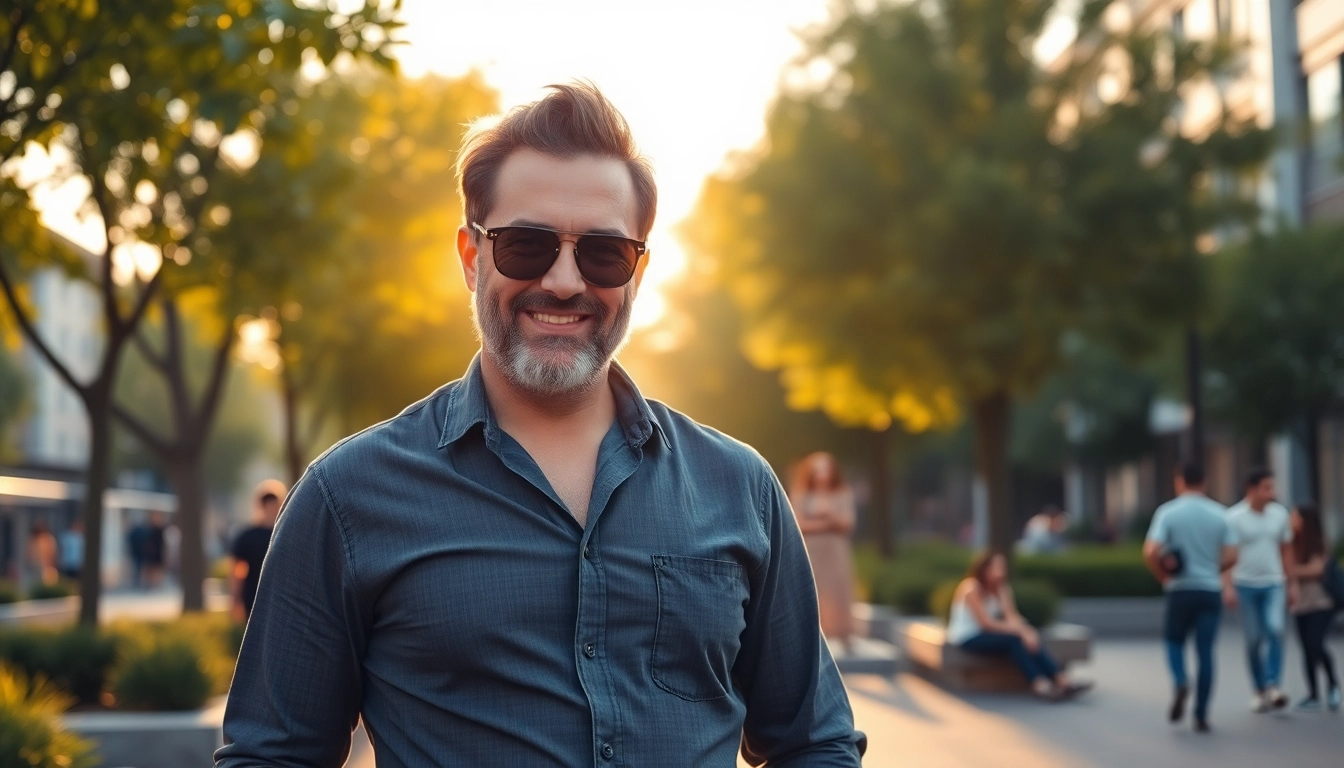Introduction to the DILF Phenomenon
In contemporary pop culture and social discourse, certain terms have emerged to describe specific archetypes of attractiveness and sexual appeal across age groups. Among these, the acronym DILF — standing for “Dad/Daddy I’d Like to F*” — has gained significant popularity. Originally rooted in colloquial slang, the term has evolved into a multifaceted cultural phenomenon encompassing media portrayals, internet communities, and societal perceptions of mature masculinity. Unlike the related term MILF, which predominantly refers to attractive mothers, DILF centers on older, often fatherly figures who exude confidence, strength, and attractiveness. This phenomenon reflects shifting attitudes toward age, masculinity, and sexual appeal, highlighting a broader cultural acceptance and celebration of mature male attractiveness. The rise of the DILF archetype is not only a testament to changing social norms but also a reflection of how language adapts to encompass a diverse spectrum of attractiveness. As we explore this topic, it’s essential to understand the origins, cultural representations, and digital communities that have propelled the DILF phenomenon into mainstream consciousness.
Origins and Meaning of the Term DILF
Historical Context and Linguistic Roots
The term DILF emerged in the early 2000s, paralleling the rise of the MILF meme that gained popularity through movies and internet culture. While MILF became a household term after the success of the 1999 film American Pie, which popularized the acronym, DILF took a slightly different trajectory. It was initially used humorously within online communities and among youth to describe attractive older men, particularly those who could be perceived as paternal figures but with an added layer of sexual desirability.
The phrase’s linguistic structure mirrors that of MILF, utilizing the acronym format to succinctly convey admiration. However, while MILF typically emphasizes maternal attractiveness, DILF emphasizes masculinity, maturity, and often, a sense of protective strength. Interestingly, the term does not necessarily imply that the man is a father; rather, it emphasizes qualities associated with older, confident men who possess a certain rugged or polished appeal. Over time, this slang has been embraced both humorously and seriously, often used as a compliment or a playful way to acknowledge attractiveness in older men.
Evolution of the Term and Cultural Adoption
Initially, DILF was popularized in online meme culture, dating apps, and adult entertainment tags, reflecting a broader acceptance of diverse sexual preferences. The term gained mainstream visibility through its inclusion in various media and internet communities, particularly in platforms like Reddit’s r/DILFs, which boasts nearly 100,000 members engaged in NSFW and SFW discussions about attractive older men. This community, alongside social media accounts like the “DILFs of Disneyland,” showcases how the term has become part of everyday vernacular for many, blending humor, admiration, and cultural commentary.
Additionally, the term has found its way into popular media and entertainment, further cementing its place in modern slang. Notably, the character “Daddy Halsin” from the popular video game Baldur’s Gate has been affectionately nicknamed by fans as a DILF, thanks to his protective personality and attractive appearance. Such representations demonstrate the broad appeal and recognition of the archetype across different media formats.
DILF in Popular Culture: Films, TV Shows, and Video Games
Films and TV Series Featuring DILF Characters
The portrayal of DILF characters in mainstream media often reflects societal ideals of masculinity, maturity, and attractiveness. A notable example is from the 2009 film American Pie Presents: The Book of Love, where a character’s father is humorously depicted as a DILF, reinforcing the archetype’s comedic and admiring connotations. Although the film is primarily a comedy, it contributed to normalizing the idea of older, attractive men as desirable figures.
Another prominent example is the Netflix series Riverdale , where Fred Andrews, played by Luke Perry, exemplifies the DILF archetype. Fans often describe him as the quintessential DILF—mature, handsome, and protective. His character’s popularity underscores how the archetype resonates with viewers, blending traditional masculinity with contemporary attractiveness.
Video Game Characters and Digital Culture
In the realm of video games, the character Daddy Halsin from Baldur’s Gate III has become a fan favorite. Known for his protective, strong personality and attractive design, players have affectionately dubbed him a DILF, illustrating how the archetype extends beyond traditional media into gaming culture. This phenomenon signifies the increasing recognition of mature, attractive male characters in diverse entertainment formats.
Impact of Pop Culture on the DILF Archetype
Media portrayals of DILF figures often emphasize qualities such as strength, confidence, and paternal charm. These characters challenge stereotypes that attractiveness is solely associated with youth, instead celebrating maturity as an appealing trait. The humor and admiration surrounding these characters contribute to a broader cultural acceptance of older men as objects of desire, further fueling the popularity of the DILF archetype across various entertainment sectors.
The Role of DILFs in Internet and Social Media Culture
Social Media Accounts and Online Communities
One of the most visible manifestations of the DILF phenomenon is through social media platforms like Instagram and Reddit. The r/DILFs community, with nearly 100,000 members, serves as a hub for NSFW and SFW content celebrating attractive older men. Members share photos, memes, and discussions, fostering a sense of community centered around appreciation for male maturity and attractiveness.
Instagram accounts such as “DILFs of Disneyland” have amassed hundreds of thousands of followers by sharing candid photos of fathers and older men enjoying family outings at Disneyland. These accounts blend humor, admiration, and casual celebration of mature masculinity, demonstrating how the archetype has permeated everyday life and social media culture.
Memes, Trends, and Cultural Narratives
Memes play a significant role in shaping the perception of DILFs, often emphasizing their rugged charm, dad jokes, or protective demeanor. Trends like #DILFMonday or #DILFGoals have emerged, further normalizing and celebrating the archetype. These digital narratives challenge traditional notions of attractiveness that prioritize youth, instead highlighting confidence, experience, and maturity as desirable traits.
The Impact of Digital Communities on Popular Perception
Online communities like Reddit and Instagram have democratized the dialogue around attractiveness, allowing fans and admirers to share their appreciation openly. This visibility has contributed to a more positive and nuanced understanding of masculinity and aging, emphasizing that attractiveness is not limited to youth but also encompasses strength, confidence, and personality. The DILF community helps shift societal perceptions, promoting a broader acceptance of diverse expressions of masculinity.
The Popularity and Search Trends of DILF Content
Search Data and Trends Over Time
Data from search engines indicates that the term DILF has seen consistent growth in search volume over the past decade. Peaks often correspond with the release of media featuring attractive older men or viral memes. Google Trends shows increased interest around specific events or media releases, reflecting societal curiosity and acceptance.
Adult content platforms also display a significant uptick in searches for DILF-related tags, illustrating the term’s importance within the pornographic and adult entertainment industry. As societal attitudes become more inclusive, the demand for DILF content continues to grow, reflecting a broader appreciation for mature masculinity.
Demographics and Audience Insights
Analysis of audience demographics reveals that interest in DILF content spans a wide age range, predominantly among younger adults aged 18–35, but also including older viewers. Both men and women search for DILF content, often for admiration, humor, or personal preference. The diversity of interest underscores the term’s broad cultural resonance and its role in challenging ageist stereotypes.
Media and Marketing Implications
Brands and content creators leverage the popularity of the term by incorporating DILF themes into advertising, social campaigns, and influencer collaborations. This strategic use capitalizes on the archetype’s widespread appeal, emphasizing qualities like strength, maturity, and attractiveness to connect with diverse audiences.
Comparing DILF and MILF: Cultural Significance and Perceptions
Contrasting Archetypes and Societal Attitudes
The terms DILF and MILF both describe attractive individuals but cater to different archetypes and societal perceptions. MILF, popularized by media and movies, often emphasizes nurturing qualities combined with attractiveness, reflecting traditional gender roles. DILF, on the other hand, emphasizes masculinity, strength, and maturity, challenging stereotypes by celebrating older male attractiveness.
While both terms have roots in sexualized media and internet culture, their social implications differ. MILFs are often associated with nurturing and desirability, sometimes with a humorous undertone. DILFs are typically linked to admiration for strength, protection, and rugged appeal, often portrayed with a humorous or respectful tone.
Perception and Reception in Society
Societal perceptions of MILFs and DILFs have evolved, with both archetypes gaining acceptance as objects of desire. However, cultural narratives still influence how each term is received. MILFs are sometimes sexualized in a playful or empowering manner, while DILFs are increasingly celebrated for breaking ageist stereotypes and redefining masculinity.
Impact on Gender Norms and Ageism
The popularity of both terms contributes to challenging traditional gender norms, promoting a view that attractiveness and desirability are not limited by age or gender stereotypes. Recognizing the appeal of DILFs encourages a broader appreciation for mature masculinity, fostering a more inclusive and diverse understanding of attractiveness.
The Future of DILF in Media and Online Communities
Emerging Trends and Potential Developments
As society continues to embrace diversity in beauty standards, the DILF archetype is poised to expand further. Future media representations may feature more complex, nuanced characters that embody the qualities associated with DILFs—strength, maturity, vulnerability, and charisma. Streaming platforms and independent content creators are likely to explore these themes more deeply, normalizing mature masculinity in varied contexts.
Influence of Technology and AI
Advances in technology, including AI-generated imagery and deepfake content, may influence how DILFs are portrayed or created in digital spaces. AI tools like dilf ai could revolutionize content creation, allowing for hyper-realistic, personalized representations of DILF archetypes. This technological evolution will shape future perceptions and desirability patterns, emphasizing the importance of ethical considerations and consent.
Changing Cultural Narratives and Acceptance
As conversations around aging, masculinity, and attractiveness become more inclusive, the DILF archetype will likely become even more mainstream. The integration of diverse representations—across races, body types, and backgrounds—will enrich the archetype, making it more representative of society’s evolving standards of beauty and appeal.
Conclusion: The Evolving Language of Attraction and Age-Related Terms / Understanding DILF: The Culture, Popularity, and Impact of the Term
The term DILF exemplifies how language evolves to reflect changing cultural attitudes toward age, masculinity, and attractiveness. From its humorous origins in online communities to its prominent presence in media, gaming, and social media, DILF has become a symbol of mature male desirability. Its rise challenges stereotypes that equate youth with attractiveness and promotes a broader appreciation for strength, confidence, and experience as desirable qualities.
As the digital landscape continues to grow and diversify, the understanding and acceptance of terms like DILF will likely expand, fostering a more inclusive view of attractiveness that transcends age barriers. The archetype’s popularity also underscores the importance of representation and the breaking down of stereotypes related to masculinity and aging.
Looking ahead, technological innovations and cultural shifts will further shape how DILFs are perceived and celebrated. The potential for AI-generated content and more nuanced portrayals promises a future where the archetype can be explored in depth and in new, exciting ways. Ultimately, the evolution of the DILF term reflects society’s broader journey toward embracing diversity, complexity, and authenticity in notions of attractiveness.
To stay informed about this fascinating cultural phenomenon, explore more about the dilf ai and how technology intersects with evolving perceptions of attractiveness and masculinity.



